Let’s terrace the clouds
This bus smells like I imagine alpaca farts must smell — a mix of ripe compost, dry grass, wet wool, and barnyard sweat. For the next six hours, I have no choice but to breathe it in.
As we begin our long bus ride from the Peruvian city of Arequipa to Colca Canyon, the fog- and pollution-shrouded mountain of El Misti is at our backs. Past the city’s edge, we start to rise up. Soon, our bus has hauled so high that we’re traveling above the clouds. In the distance, the Andean land throws skyward even higher, mile-high peaks, the dark volcanic tops of Coropuna and Ampato capped with snow.
I have not yet conquered my fears of heights and of the bus driving off the road down down down into the valley far below. To endure this ride, I need to mentally distance myself from my anxiety.
So far, I’m not doing a very good job.
Todd’s not helping either. When the windows mercifully fog over, disappearing the view of the steep plummet just at the road’s edge, Todd wipes them clear again.
I think, “Please don’t do that,” but say nothing because I’m pretending to be brave.
Gazing around the bus for a distraction (and for somewhere to look besides out the window) a newspaper headline catches my eye. Peering over the shoulder of the man a row ahead, I can make out the beginning of the headline: “18 MUERTOS…” Beneath, there’s a photo of another smashed and burned Peruvian bus. I turn away, returning to the window. I don’t want to know the rest.
The road’s highest pass cuts through Reserva Nacional Salinas y Aguada Blanca. Out the noisily vibrating window, a yellow sign cautions that we’ve entered “Zona Vicuña,” offering a helpful silhouette of the unusual, svelte camelid we’re on the lookout for.
Thousands of balanced stone towers, like those used as trail markers, dot the roadside — a sure sign of boredom. Bubbly bright green blobs of strange plant life called yareta seem to threaten to coalesce, looking like errant drops of You Can’t Do That on Television slime.
Flocks of birds gather around lagoons that reflect the sky. Herds of llamas, alpacas, and, yes, vicuñas lounge about. The occasional roadside shrine marks where people pray or have died. And then, far from any field, a tall boulder outfitted in the colorfully embroidered clothing of a local woman stands guard like a scarecrow for lichen.
In seemingly desolate locations along the road, the bus stops to let people on and off. They disappear quickly off the road’s edge and down the steep slope, heading in the direction of nowhere.
While we’re stopped, women often surround the bus crying, “Chicha de jora!“ “Chiccharon!“ “Chocolo!” Simply peer out a window and a woman will raise a stick with the cut off top half of a two-liter soda bottle taped to the end, creating a bowl. If you want what she’s selling, put your money in the bowl, it descends, then raises back up filled with a knotted plastic bag of corn moonshine, fried pig parts, or snacking corn, along with your change.
At a brief stop in the small village of Chivay, the passengers scramble off only to be replaced in equal number and then some. Most of the women wear traditional outfits and hats decorated with geometric and floral patterns that express their tribal connections and audacious fashion sense. The men to the last wear blandly Western pants, shirts, and baseball caps.
As we pull out of the Chivay bus station, the road, which the guidebook says was put in only in 1985, loses its pavement. Axles, windows, teeth, and bones begin to rattle noisily. The bus sways along the uneven surface and swerves as the driver avoids potholes, mud puddles, and rockslides.
Despite the swerving, I (mostly) forget my fears because the view of Cañón Del Colca is all that and a bag of cancha. Most buses leave Arequipa for Colca Canyon late at night, 1 a.m. or so. Besides the extra peril of traveling on an unpaved, unlit winding mountain road, the night bus would be a waste of a view and an experience.
We pass terraced fields filled with lush crops of every color, but mostly green. Green is everywhere — in the blue washed green of swaying sweet potato plants, the red-purple slathered green of fruiting quinoa, and the fragile khaki green of the end-of-season corn stalks. The fields are bounded by gray stone walls, divided into smaller plots by naturally winding creeks and man-made zig zagging switchback trails.
Anything that isn’t animal, house, waterway, roadway, or stone has been extremely terraced. Peruvians would terrace the clouds, if the clouds would just hold still.
At Cruz de Condor, the tourist spot for watching Colca Canyon’s famous condors, smooth pavement returns and, along with it, a sudden (relative) silence. The onboard mood changes as we close in on our last stop, the village of Cabanaconde on the rim of Colca Canyon. Preparations get made: sleep rubbed from eyes, shirts tucked in, hats retrieved from luggage racks, belongings gathered, goodbyes said to seatmates turned convenient friends.
As we make our final descent from the Andean heights, we disappear into a cloud.

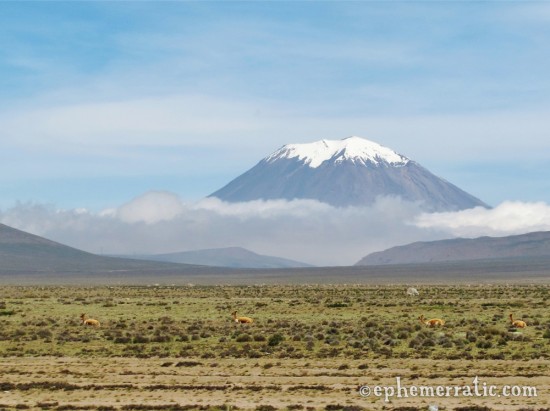
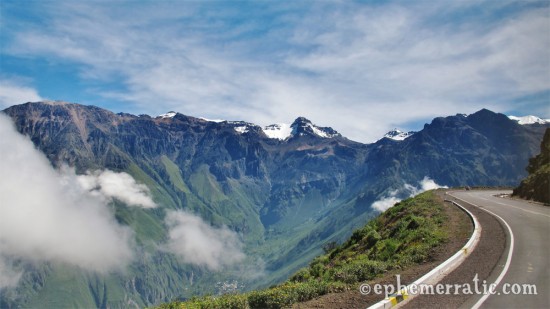
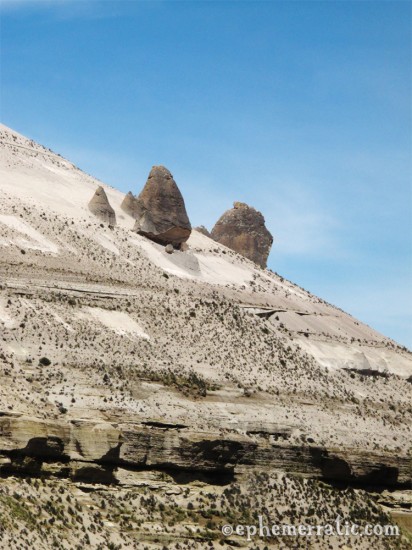
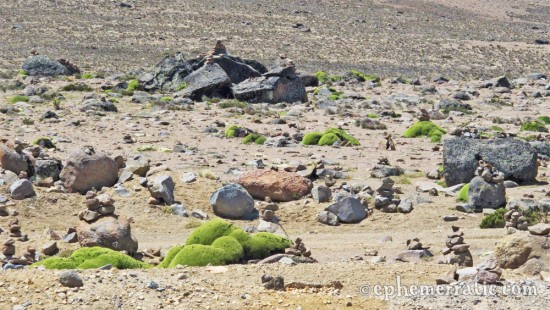
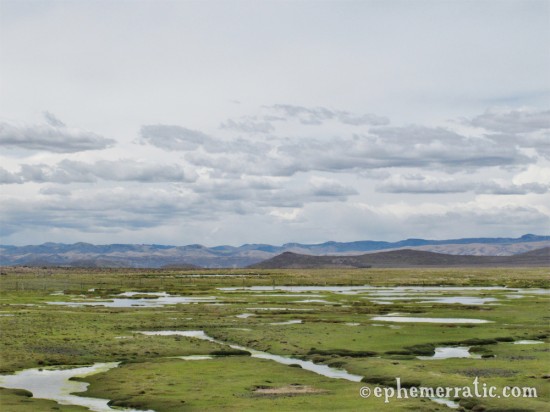
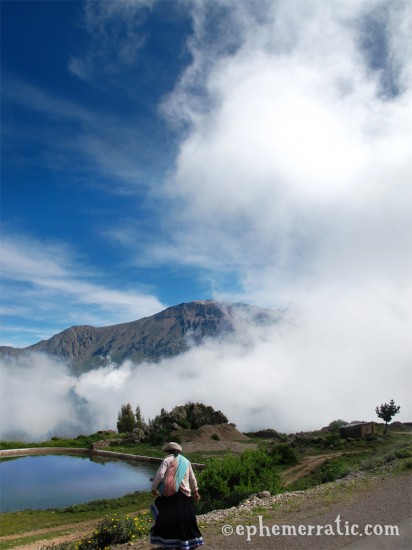
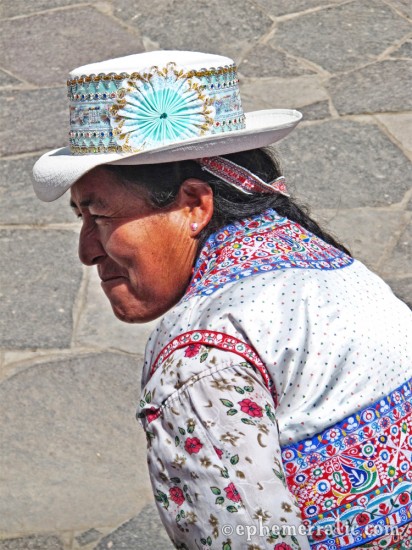
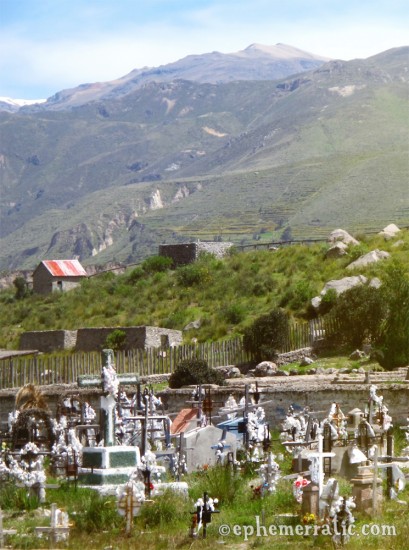
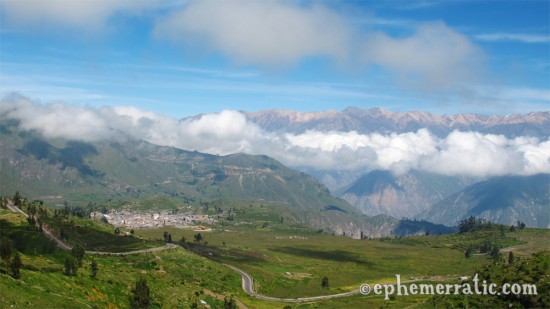
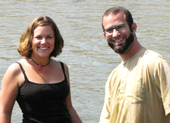
Lauren, you had me at the opening sentence. “This bus smells like I imagine alpaca farts must smell”… awesome! Love it.
I can imagine your terror on the steep, winding road – we’ve never been to Peru (someday soon, hopefully), but I took a bus on a winding mountain road in Taiwan that still gives me the shivers 10 years later!
I’m always torn on these kinds of rides. I want to enjoy and photograph the views and candid scenes out the window. But then, being in the window seat leaves me gasping in panic when we inevitably pass a part of the road that’s particularly cliff-like. Glad you enjoyed my story!
Beautiful pictures. I also always freak out on winding mountain roads that have a steep drop into the valley below. But it sure is worth the white knuckles for the views!
The number of people that share our freak out sometimes makes me wonder why the seats aren’t in the middle of the bus, and the aisles on the sides.
Lovely pictures and article! We too are travelling to Peru this year and on through to Bolivia, Argentina and Brazil. I am scared of heights though, and the bus crash / narrow roads / sheer drops are terrifying me from over here in England.. Did you hear of anything happening when you were over there, or is it all drama-hype? And did you use always use the big bus companies? Thanks!
Congratulations on planning a trip to Peru and beyond! What a great trio of countries you’ve picked. Travelers we met in Peru spoke very highly of Bolivia in particular, especially the Bolivian side of Lake Titicaca.
I have a bit of a fear of heights myself, though my sense of adventure has definitely helped me (start to) get over it! Though I don’t want to add to your fear, Michala, the bus system in Peru is, to put it generously, troubled — and bus crashes in Peru are more frequent than they should be.
I’ve got lots of reassuring advice in my story, “Buzz kill bus crash.”
If you do find yourself worrying about a bus ride in Peru — or anywhere for that matter — keep this in mind:
The bus driver doesn’t want to die any more than you do.
Ha, thanks Lauren. I appreciate your last comment, but I’ve seen that they drive very dangerously, so it does make you wonder!
It’s the videos of the worlds most dangerous road that scared me, but I guess its all part of the adventure, and tons of people I know have done it :-)
Touché! Some drives DO seem hell-bent on self destruction. I’ve heard those are probably the drivers that get paid by the ride, rather than by the hour so they’re motivated to race to the finish.
It sounds like you should stop watching those scary videos :)
Hi Lauren,
What a beautifully written post. I so appreciate words woven into a great story — and in your case — accompanied with pretty photography.
The reason I came to your site from Twitter is because of the title — “Let’s Terrace the Clouds.” Love it! I am such a goofball about cloud formations and everyone is always teasing me about it. Feel like I found a kindred spirit in you!
Thanks,
Josie
Thanks so much, Josie. There’s something so fantastic about ascending and descending hills and winding roads, and coming in and out of cloud formations. Nature’s rollercoaster!